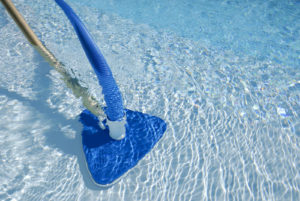
Properly maintaining your swimming pool and making some simple changes can help you conserve water.
Your pool will be water-efficient if you learn to conserve water by fighting evaporation. It also helps to preserve the water that might be escaping your pool for other reasons. Some of these means are harder to detect, which is why many pool owners never consider them. Here are steps you can take to conserve water in your pool.
Identify and Fix Leaks
Is protecting pool water levels a challenge? If so, then identifying leaks should be on the top of your pool maintenance to-do list. If left unchecked, a pool leak can result in a water loss of hundreds of gallons of water. Watch for areas where water might be exiting the pool or equipment lines.
Also, monthly water bills might indicate that a leak exists. It’s best always to review your statement to see if there is a sudden surge. Another trick involves marking the current water level on a tile along the interior perimeter and placing a piece of tape on it or marking it with a water-soluble grease pen.
After a day, look at how much the water level lowers. If the water level decreases by more than a quarter of an inch, a leak might be at play. When in doubt, always call a professional.
Appropriately Maintain Your Pool Water
Proper pool maintenance prevents significant water loss. Calcium damage to pool plaster increases if you don’t maintain the chemical balance. Calcium damage affects water loss in two ways.
1) Plaster contains calcium; if the pool’s mineral level is too low, water draws calcium out of the plaster, creating unappealing etching in the material. Fixes these blemishes might require power sanding the pool’s entire interior
2) Calcium levels being too low is also problematic. Mineral deposits accumulate in and around a pool, forming crystals on the surface called “scale” or gray, white, or brownish spots and shadows throughout the pool’s interior.
Here is where declining water levels come into play. You must empty it when you have to resand, acid wash, or re-plaster a pool. You’ll end up emptying thousands of gallons of water. You can avoid this by implementing consistent pool water treatment that involves monitoring your pool’s pH, alkaline, and calcium hardness levels regularly.
Clean out the Sand or DE Filter When Necessary
Standard pool filters include sand and diatomaceous Earth (DE). Both require routine care to prevent debris from accumulating and prevent clogs. You can clean sand and DE filters through a process called backwashing, where you reverse the flow of the pool through the filter. Then, the contaminated water flows through a pipe connected to the filter and out of the pool.
The backwashing process only takes a few moments, but you might have guessed that you can lose a lot of water, 200 to 300 gallons, to be exact. Most DE filters require a backwash three to five times a year.
You should never neglect your filter. However, it’s best to be careful about how frequently you backwash the filter. It’s time for a backwash if the pressure on the gauge reads eight to ten pound-force per square inch (psi) above the usual starting level.
Replace Your Filter with a Cartridge Model
Cartridge filters don’t require losing out on a lot of water to get clean. You open the filter tank, remove the cartridge, and quickly wash it with a garden hose. You can also utilize an oversized cartridge to conserve water at an even larger capacity. Large models can go longer without cleanings. Some cartridges hold so much debris that you only have to clean them once or twice a year.
Contact Sunrise Premiere Pool Bulders today for all of your pool design, installation, and maintenance needs. We’ll put you on the right track to ensure you enjoy your beautiful pool safely year after year.
Contact Sunrise Premiere Pool Builders
Whether you want to make improvements to your current pool or you’re in the market for a new pool, Sunrise Premier Pool Builders is here to help create the perfect pool for you. Customizable pools and spas are just the beginning and we are more than happy to walk you through every step to choosing the perfect products for you and your family. If you’re ready to begin, contact us at 410-349-3852 or online. To see examples of our work look at our social media pages Facebook, Twitter, LinkedIn, Pinterest and Google+.
